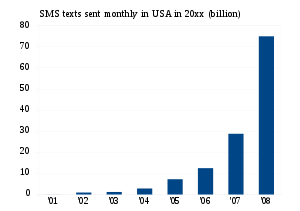By Carl Weiss
In the recently released motion picture Gravity, astronaut Sandra
Bullock becomes detached from the Space Shuttle after a debris storm causes her
and fellow astronaut played by George Clooney to wind up adrift in the vastness
of outer space. Tumbling all alone in
the dark void with a limited supply of oxygen and little hope of being rescued,
Sandra copes as best she can with the terror of being lost in space. While few of us will ever come to know this
kind of visceral fear, many website owners have experienced a similar sense of
despair and helplessness when their site went from page one to the vastness of
cyberspace after an algorithm reset by a major search engine.
The fact of the matter is that search engine operators do
not want anyone save for a select few to understand how their algorithms work. They are also known to throw a monkey wrench
into the machinery from time to time.
Sometimes they do this to shake out the legions of businesses that make
money by gaming the system. Sometimes
they do it just because they can. Either
way, while an update by Google may come with a cute and fuzzy moniker such as
Panda or Penguin, once published it can leave website owners feeling more like
they have been attacked by a Bengal Tiger or Great White Shark.
Guilt by Association
While there are more than one hundred items that Google uses
to rank pages, one of the easiest ways to run afoul of the 800 lb gorilla in
the room is to game the system, or hire someone who does so on your
behalf. For more than a decade it was
possible to aggregate rank by using underhanded tactics such as keyword
stuffing, link farms and invisible text in order to create the appearance of viability. Of course this was back in the days before
the search engine spiders had the ability to analyze what they saw as they
leapt from website to website. Today the
googlebots and other search engine spiders can not only understand what they
read, but they have been programmed to detect cheaters and respond
accordingly. If your site is determined
to be employing any of the Black Hat techniques that are frowned upon, not only
will you be relegated to the backwaters of cyberspace, but it could be years
before you will ever see the light of day. This last fact is regardless of
whether you were the one who added the offending code, or whether it was added
by someone in your employ.
More importantly, when it comes to search engine success, you
don’t need to cheat them to beat them.
While gaming the system may generate position in the short run, it
almost always fails over the long haul. Plus there is a high probability that
when the next algorithm change is published, you may fall into a black hole
from which you may never be able to climb out. Some website owners are literally forced to
commission an entirely new website in order to get back into the game, losing both time and money in the process.
While it is impossible to completely understand every warp
and weave of Google’s algorithm, just as you don’t have to understand how to
build a chicken to make an omelet, you can get the gorilla to like you by
feeding him what he likes to eat. The
Google gorilla is a picky eater who first and foremost likes his own
brand. This translates into creating
lots of content on all the properties that Google owns. So if you blog, you need to become familiar
with Blogger, which is owned by Google.
If you produce videos, then you need to create a channel on
YouTube. And even though you may be
addicted to Facebook, if you want to make the gorilla smile on your online
marketing efforts, you had better start feeding Google+ as well.
What do Webmasters
Want?
Now you will notice that so far I have failed to even
mention on-page optimization (aka SEO). That’s due to the
fact that while important, it now only contributes to 25% of your overall
score. The other 75% is gleaned from legitimate backlinks, along with blogs, social media and videos.
Not that on-site optimization is unimportant. It has simply changed over the course of the
past few years. Where such things as
Meta Tags and keyword richness were all the rage four or five years ago, Google
claims that they no longer rely on Meta Tags at all for ranking. Today Google places more emphasis on
SEO-friendly urls and titles, along with backlinks and mixed media. Don’t confuse having links to social sites
and blogs with feeding them. Unless you
are adding at least a blog a week and feeding your social nets on a daily
basis, the googlebots will know and act accordingly.
In fact, as I pointed out in a previous blog entitled, “Is SEO Still Relevant?” the term Search Engine Optimization really needs to be altered
to Search Engine Marketing, since optimizing the website is only a small part
of the process to achieving page one results today. As a result the task has become infinitely
more complicated. No longer can you
create a perfectly optimized website every two to three years, spin it off into
cyberspace and expect it to climb the ranks to wind up on page one. Now you also need to commit time and/or
money to feed the system on a daily, weekly and monthly basis in order to get
into the game. While many people see
this as a way of tipping the playing field in favor of larger firms that can
afford to hire a team of bloggers, social posters and videographers to do their
bidding, nobody ever said the game was fair.
Face it, Google and all the other search engines don’t make
one slim dime from organic search. They
make their money from pay-per-click campaigns and banner ads, most of which
comes from major corporations. Besides,
when you own 82% of search as Google currently does, fairness doesn’t even come
into consideration. As the saying goes, “What
do you feed an 800 lb gorilla? Anything
it wants.”
For many small businesses, this isn’t the best policy, it’s
the only policy. Giving the gorilla what
he wants gives you a chance to take advantage of the system just as your bigger
brethren do. In fact, we have worked with
small businesses who not only competed successfully with Fortune 500
contenders, but who eventually bested them.
Another advantage of being smaller is that you can react faster. You can analyze the competition and target
their weaknesses. If a larger competitor
has the advantage in social media but is weak in blogging, bulk up your
blog. If they don’t understand the
advantages of video, go after them on YouTube.
The beauty of the web is that the emperor wears no clothes. You can see what everybody else is doing and react accordingly.
This brings up the second speed bump that stops many small
businesses in their tracks: Making the time to
feed the beast. Most business owners have enough on their
plate day in and day out in simply running their businesses. This leaves precious little time to write and
post to blogs and social sites, let alone shoot and edit video. However, the answer to this dilemma is but one point and
click away. It’s called
outsourcing. For less than most
businesses spend on a display ad in the yellow pages, you can hire out some or
all of the tasks mentioned above. There
are legions of bloggers, social posters and videographers out there that are
ready, willing and able to come into the fray.
If you find that you don’t have the budget to outsource the entire
project, determine which part of the equation you can do in-house and then
outsource the rest.
The only other solution is to ignore the Internet, as all
too many small business owners are wont to do.
To this I pose the following question, “If you aren’t found on page one
of Google, but your competitors are, is this good or bad for your business?” (Danger, Will Robinson!) While it may take a little time and money to
get off the bench and into the game, even if it took several months to wind up
on page one, this is still better than being lost in cyberspace.
Carl Weiss is president of W Squared Media Group, a digital marketing
agency that offers guaranteed organic placement on a number of major search
engines. He also owns Jacksonville Video Production and co-hosts the weekly
online radio show Working the Web to Win every Tuesday at 4 pm Eastern.









